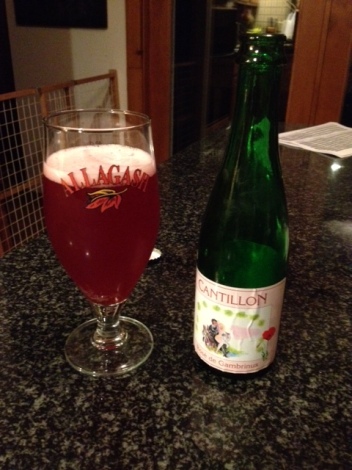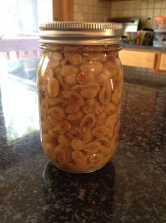I have had it in my mind that I want to try to brew a close to traditional Lambic using no commercially supplied yeasts. While these are considered “Wild Yeast” they truly are not since they have been domesticated. The benefit of having access to these yeasts is you know exactly what you are going to get. That is always a great thing in brewing, but sometimes it can take the fun out of it. My plan is to brew up 10 gallons of a Lambic using a traditional recipe 65% malted barley and 35% flaked wheat using a turbid mash. Now I do not plan to do 10 gallons of an actual spontaneous fermentation, but rather split the batch into two and brew 5 gallons with a project I am currently working on.
“Whats that project?” you might ask. Well it is harvesting yeast out of Cantillon bottles. A few buddies of mine and I decided to put in an order for some great Belgian sours through Etre Gourmet. The experience was great and shipping was prompt. I figured why not try and get some yeast out of these bottles since I have access to them. I have successfully harvested yeast on several occasions, but never out of a Lambic or Sour. Being my first stab and not finding a load of information online about Cantillon yeast harvesting I thought it would be nice to have a pretty good documentation.
First things first I needed to make up a small starter solution with a low original gravity to give the yeast and bacteria something to wake up and feed on. So I made up about 4 oz. of 7 Brix wort. I followed standard procedures as any other starter boiled the wort for 10 minutes, etc. What I did differently with this was added some oak cubes (7 cubes) and started out in a mason jar. I boiled the mason jar, lid and ring, and oak cubes together for 15 minutes to sterilize everything. once completed I poured the boiling wort into the mason jar sealed it up and immediately cooled it. Once cooled came the awesome part opening up a bottle of Rose De Gambrinus and slowly pouring it into my Allagash chalice.
This is great stuff and what a framboise is supposed to taste like. The awesome part of this was it was bottled on Sept. 3rd. This is good for harvesting yeast. Once poured into the glass I left ~1/2 oz behind and gave it a good swirl and poured it into the mason jar. After a day there was no signs of movement and I had the craving for another Cantillon this time I opened up a Oude Gueuze 100% Lambic Bio and performed the same procedure. Upon waking up in the morning I work up to find the mason jar with a nice krausen. 

